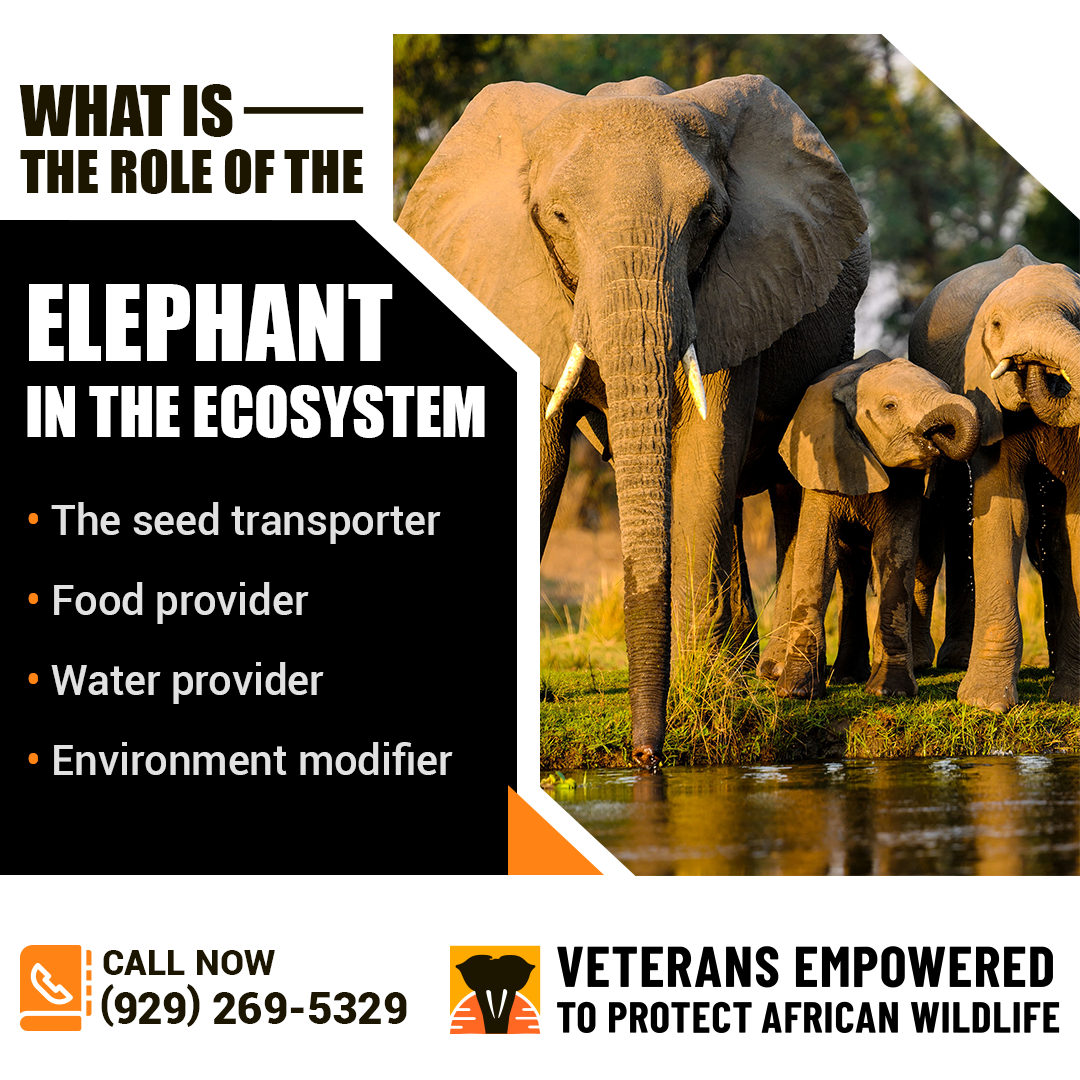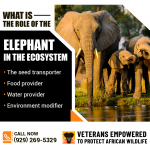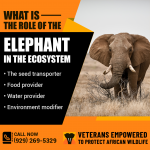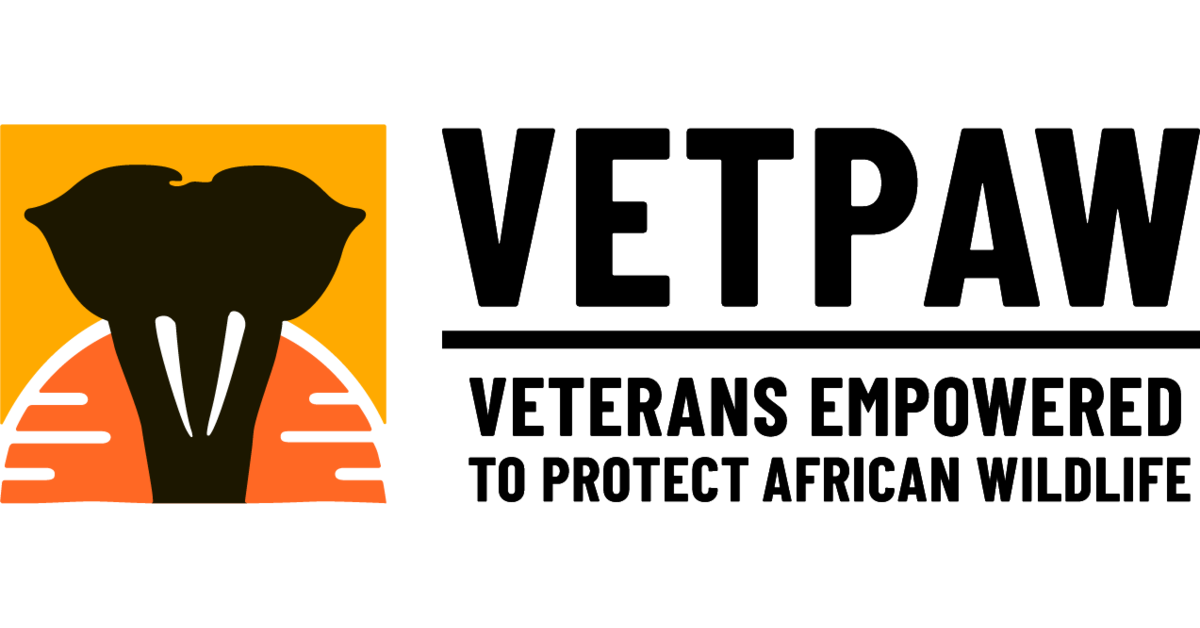The importance of elephants to the ecosystem
The largest mammals on land and the most intelligent species on the planet, elephants have fascinated humans since time untold. They are an icon across several religions, cultures, and traditions across the globe. More importantly, they are a keystone species that is indispensable to the ecosystem. VETPAW reviews the importance of keystone species and explains the role elephants play in the upkeep of the ecosystem.
What is a keystone species?
A keystone species is an organism that defines an entire ecosystem. In its absence, the ecosystem would be dramatically different or cease to exist altogether.
Keystone species have low functional redundancy, which means that if the species were to disappear from the ecosystem, no other species would be able to replace it. The ecosystem would radically evolve, allowing new and possibly invasive species to populate the habitat.
The elephant is one such keystone species that has a critical role to play in the ecosystem, and currently, its existence is at risk owing to poaching and illegal wildlife trade.
What is the role of the elephant in the ecosystem?
-
The seed transporter
The largest herbivore in the world, elephants consume massive amounts of plant material, including seeds, daily. Elephants carry this plant material in their guts and drop them off in mounds of dung, thousands of meters away from where the plants were initially eaten. Studies show that elephants can disperse seeds over a distance of 38 miles.
Elephant dung plays the role of a nutrient-rich fertilizer that allows seeds to germinate and grow. This seed dispersal provides opportunities for plants to colonize new areas that become new habitats and food for other animals.
-
Food provider
Elephants not only indirectly lead to food production by dispersing seeds, but they also directly provide food to a vast variety of species. The elephant dung, which is abundant in nutritious solids and fluids, becomes food for the following organisms:
- Dung beetle and its larvae: Dung beetles gather the elephant dung and consume it for its rich nutrients and fluids. It also buries this dung under the soil for its larvae to feed on and grow.
- Insects and birds: Swarms of insects congregate on the dung for its nutrients. These insects in turn become a source of food for birds in the territory.
- Plants: Elephant dung provides more than what dung beetles can consume, so they bury the dung below the ground for their larvae. This helps to introduce the fertilizing dung into the tightly-packed soil enabling plants to flourish.
- Larvae eaters: The submerged beetle larvae - that feed and grow thanks to the elephant dung - become a source of food for several different animals – like field mice and honey badgers.
So, elephants are responsible for the survival of various species and contribute to species diversity within ecosystems.
-
Water provider
Elephants use their feet, trunks, and tusks to dig wells for underground water. They create holes deep enough to tap into underground water sources, which then become accessible to other animals as well.
-
Environment modifier
Elephants, being the largest mammals and herbivores on land, are unstoppable. They trample through vegetation with ease, clearing paths that help in the survival of various species. This slowly and fruitfully modifies the environment.
- Light for plants: The clearings created by the elephants as they travel allows more light to reach the forest floor. This light gives lower-lying plants a better opportunity to grow and thrive.
- Diversity: As new plants grow in the clearings, new sources of food and new habitats are created. These niches allow for new organisms to inhabit these areas and so species biodiversity becomes possible.
- No woodlands: Elephants consume shrubs and small trees, such as acacia. Any tree that grows beyond a height or a meter is easily uprooted by elephants. This feeding behavior helps to control the tree population and ensure that the savanna remains an open grassland and does not evolve into forests or woodlands.
The savanna biome supports the species such as antelopes, wildebeests, and zebras that need grass to survive. Smaller animals such as mice and shrews can burrow in the warm, dry soil of a savanna while predators such as lions can hunt their prey in the open grasslands of the savanna.
VETPAW is one such organization that has been working tirelessly to protect Africa’s endangered species such as elephants, rhinos, cheetah, and pangolin. A contribution to Operation Rhino Rise can make a massive difference to the wildlife conservation efforts.
VETPAW Charity Ratings
VETPAW believes in financial transparency. As a registered 501(c)(3) nonprofit, it relies on donations to fulfill its missions, but all contributions to its cause are tax-deductible as charity donations. All donations that VETPAW receives goes toward:
- Stopping illegal wildlife trade
- Protecting endangered animals
- Providing work to unemployed veterans
- Supporting African communities
VETPAW - Veterans Empowered to Protect African Wildlife
Founded in 2013, VETPAW is a non-profit organization and a community of US war veterans dedicated to protecting African wildlife and training local African rangers in the war against poaching.
























